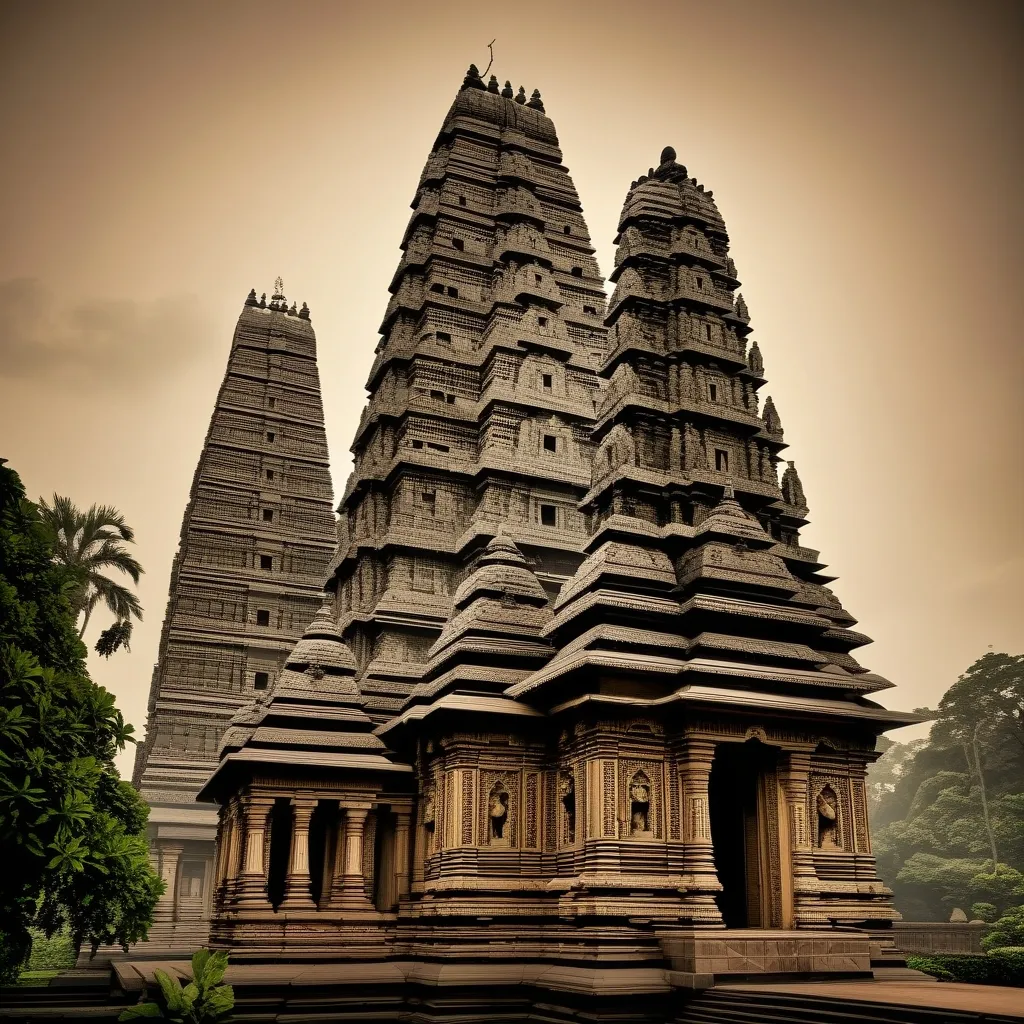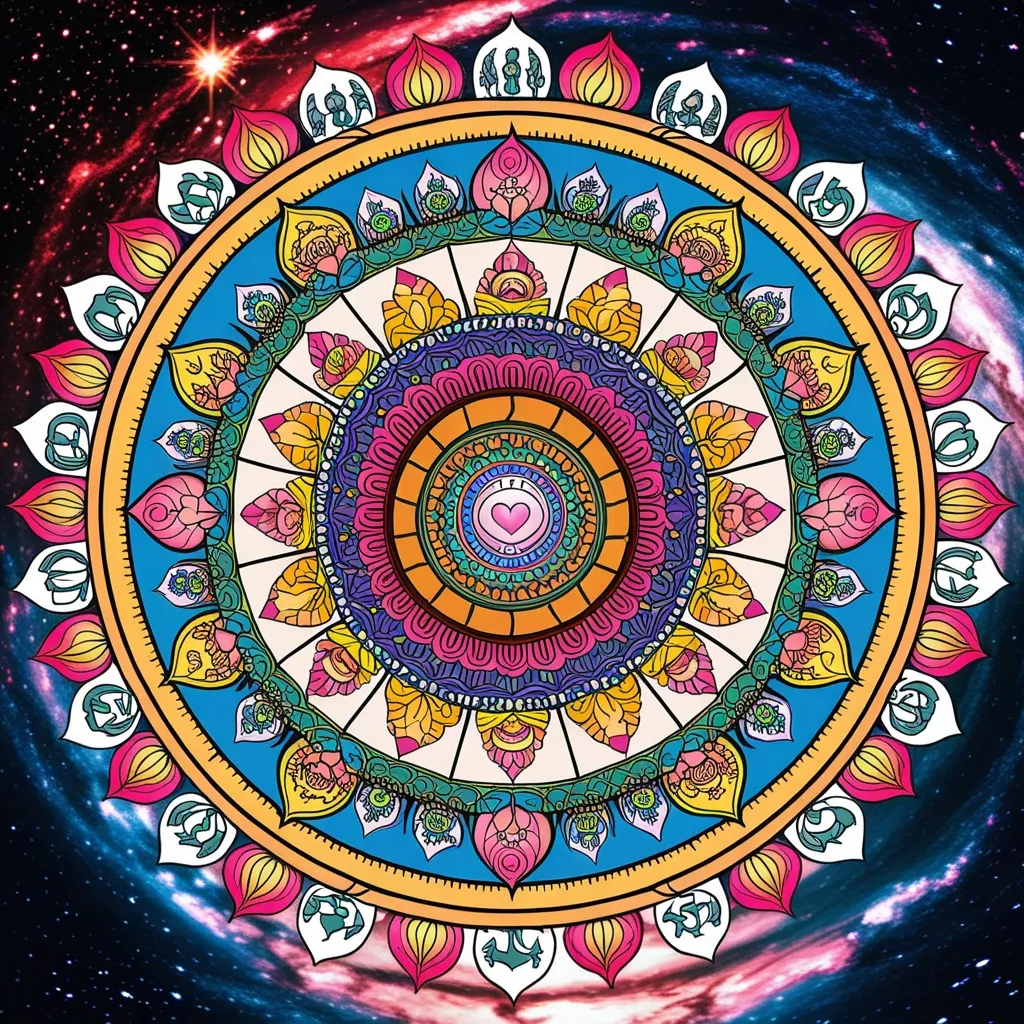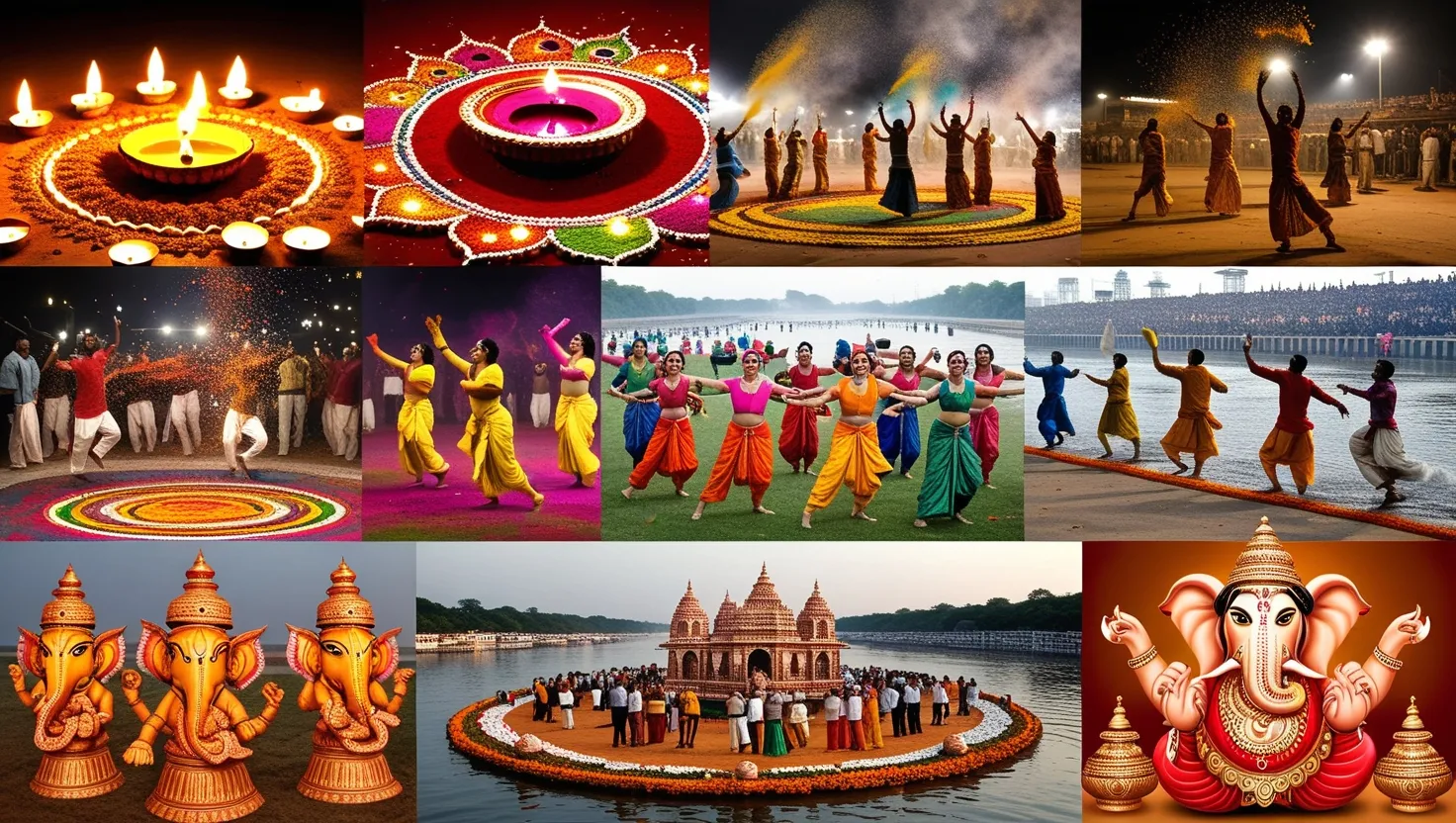Hindu temples are mind-blowing, aren’t they? They’re not just pretty buildings - they’re like giant 3D puzzles packed with hidden meanings. Every little detail tells a story about Hindu beliefs and the universe.
Let’s dive into the wild world of temple symbolism. First off, these temples are basically mini-universes. No joke! The whole layout is based on this thing called the Vastu Purush Mandala - a fancy square diagram that represents the earth and cosmos. It’s all about creation, preservation, and destruction - the big themes in Hindu philosophy.
Now, get ready for some funky geometry. Squares, circles, triangles - they’re not just shapes, they’re like secret codes. Squares mean order and completeness, while circles are all about time and movement. And get this - these shapes repeat throughout the temple, creating a trippy fractal pattern. It’s like the architects were trying to explain the universe through shapes. Mind. Blown.
But wait, it gets weirder. The temple is actually designed to look like a god’s body. I’m not kidding! The inner sanctum is the heart, the entrance tower is the feet, and the top part is the head. It’s like a giant divine anatomy lesson. And it doesn’t stop there - the temple also represents the seven chakras in the human body. It’s like a roadmap for your spiritual journey, starting from your feet and working up to the top of your head.
Here’s where it gets really cool - all this symbolism isn’t just random. It’s part of a shared language that runs through all Indian arts. The same symbols you see in temples show up in dance, music, and storytelling. It’s like a cultural secret code that everyone used to know.
Every part of the temple has a special meaning. The flag post is like the god’s personal banner, the outer walls are divine fortifications, and the whole structure is sometimes called a “airplane of the gods.” How cool is that?
And get this - the temple is also supposed to be a mountain and a sacred tree at the same time. It’s like a spiritual Swiss Army knife! The mountain idea comes from all these old myths, and the tree symbolism is about spiritual growth. The main deity is like the seed, and the whole temple grows from there.
Now, here’s the thing - back in the day, people totally got all this symbolism. It was part of their daily lives, woven into their stories and rituals. But nowadays, with modern education and all, a lot of this understanding has faded away. It’s like we’ve forgotten how to read this amazing spiritual language.
But here’s the good news - we can totally rediscover all this cool stuff! By learning about these symbols, we can connect with the divine on a whole new level. It’s like unlocking a secret level in a video game, but for your soul.
And here’s the kicker - Hindu artists didn’t just come up with this stuff on their own. They believed they were tapping into divine consciousness through meditation. So these temples aren’t just buildings - they’re like frozen moments of spiritual inspiration.
So next time you’re at a Hindu temple, take a moment to really look around. Every curve, every carving, every little detail is trying to tell you something. It’s like the universe is whispering its secrets, if you know how to listen. These temples aren’t just places of worship - they’re cosmic puzzles, divine body maps, and spiritual guidebooks all rolled into one. They’re a reminder that there’s more to reality than what meets the eye, and that the divine isn’t just out there somewhere - it’s inside us too.
And you know what? Even if you’re not Hindu, there’s something pretty amazing about standing in a place where every single detail was designed to point towards something greater than ourselves. It’s a testament to human creativity and our endless quest to understand our place in the universe.
So go ahead, explore a temple. Let your imagination run wild. Try to see the cosmic dance in the carvings, feel the rhythm of creation in the architecture. Who knows? You might just stumble upon some profound truth about yourself or the universe. At the very least, you’ll gain a deeper appreciation for the incredible depth and complexity of Hindu culture and spirituality.
And hey, even if all the symbolism goes over your head, you can still appreciate the sheer artistry and craftsmanship that went into these temples. I mean, have you seen the intricate carvings? The towering spires? The mind-boggling precision of the architecture? It’s like the ancient builders were showing off, saying, “Look what we can do when we’re inspired by the divine!”
But here’s the real kicker - Hindu temples aren’t just about the past. They’re living, breathing places of worship. People still come here to connect with the divine, to find peace, to seek blessings. The rituals and mantras that echo through these halls are the same ones that have been spoken for centuries. It’s like stepping into a time machine, but one that’s still totally relevant today.
And let’s talk about the energy of these places. Even if you’re not religious, there’s something undeniably powerful about standing in a space where millions of people have come to pour out their hopes, fears, and dreams. It’s like the walls have soaked up all that emotion and devotion over the years. You can almost feel it humming in the air.
Now, I’m not saying you need to convert to Hinduism or anything. But there’s something to be said for approaching these temples with an open mind and heart. Try to see beyond the surface, beyond the tourist attraction aspect. Try to tap into that ancient wisdom, that cosmic understanding that’s encoded in every stone.
Who knows? Maybe you’ll have some sort of spiritual epiphany. Or maybe you’ll just gain a new appreciation for a culture that’s been around for thousands of years. Either way, you’re in for a mind-expanding experience.
So next time you’re near a Hindu temple, don’t just snap a quick pic for Instagram. Take some time to really explore, to soak it all in. Let your imagination run wild. Try to see the universe in a pillar, the divine dance in a sculpture. You might be surprised at what you discover - not just about Hindu culture, but about yourself.
Remember, these temples aren’t just relics of the past. They’re portals to understanding - understanding ourselves, our place in the universe, and the endless mysteries of existence. Pretty heavy stuff for a bunch of old buildings, right? But that’s the magic of Hindu temples. They’re not just places of worship - they’re gateways to the cosmos, inviting us all to take a peek at the divine.






